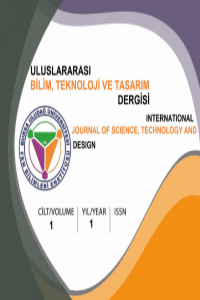MEDİKAL TEKSTİLLERDE KULLANILMAK ÜZERE ÖRME VE DOKUMA KUMAŞ GELİŞTİRİLMESİ
Antimikrobiyal Tekstiller, Gümüş Elyaflar, bez maske, Medikal Tekstil
DEVELOPMENT OF KNITTED AND WOVEN FABRIC FOR MEDICAL TEXTILES
Antimicrobial Textiles, Silver Fibers, Fabric Mask, Medical Textile,
___
- Atılgan Türkmen, B. (2021). “Life Cycle Environmental İmpacts Of Disposable Medical Masks”. Environ Sci Pollut Res. https://doi.org/10.1007/s11356-021-17430-5
- Selvaranjan, K., Navaratnam, S., Rajeev, P., & Ravintherakumaran, N. (2021). “Environmental Challenges İnduced By Extensive Use Of Face Masks During COVID-19: A Review And Potential Solutions”. Environmental Challenges, 100039.
- Liu, R., & Mabury, S. A. (2021). “Single-use face masks as a potential source of synthetic antioxidants to the environment”. Environmental Science & Technology Letters, 8(8), 651-655.
- how-medical-masks-are-made-bottlenecks-and-solutions.pdf (edana.org), (Erişim Tarihi, 03.01.2022).
- Chellamani, K. P., “Veerasubramanian, D., & Balaji, R. V. (2013). Surgical face masks: manufacturing methods and classification”. Journal of Academia and Industrial Research, 2(6), 320-324.
- Wibisono, Y., Fadila, C. R., Saiful, S., & Bilad, M. R. (2020). “Facile approaches of polymeric face masks reuse and reinforcements for micro-aerosol droplets and viruses filtration: A review”. Polymers, 12(11), 2516.
- Kertmen, N. (2021). “New Trends in Fibers Used in Denim Fabric Production”. Tekstil ve Mühendis, 28(121), 48-59.
- Marmaralı, A., Kretzschmar, D.S., Özdil, N., & Oğlakcıoğlu, G.N. (2006). “Giysilerde Isıl Konforu Etkileyen Parametreler”. Tekstil ve Konfeksiyon,16 (4), 241-246.
- TSE K 599, 2020, “Tekstilden Mamul Tekrar Kullanılabilir Koruyucu Yüz Maskeleri”, Türk Standartları Enstitüsü.
- Başlangıç: 2020
- Yayıncı: Bursa Uludağ Üniversitesi
Metal Malzeme Yüzeylerine Atmosferik Basınçlı Plazma Uygulamasının Yapıştırma Bağlarına Etkisi
Öyküm KANBİR, Emel TAŞYAKAN, Kadir ÇAVDAR
Batarya Elektrikli Araçlarda Şanzıman Tipleri Üzerine Derleme
MEDİKAL TEKSTİLLERDE KULLANILMAK ÜZERE ÖRME VE DOKUMA KUMAŞ GELİŞTİRİLMESİ
Mehmet KERTMEN, Hakan KARAGÖL, Halil İbrahim OLUCAK, Elif Aylin PEKTAŞ, Aybüke ŞEN, Ahmet Recep HELVACI
Roles of Plant and Fungal Lectins in Cancer Diagnosis and Treatment: A Scoping Review
